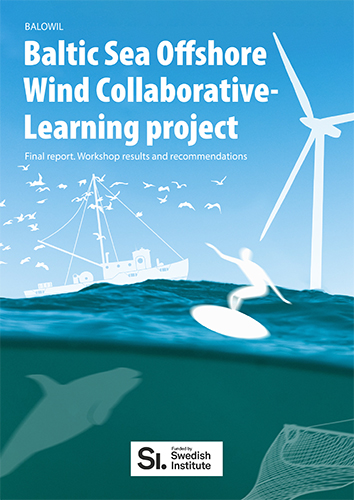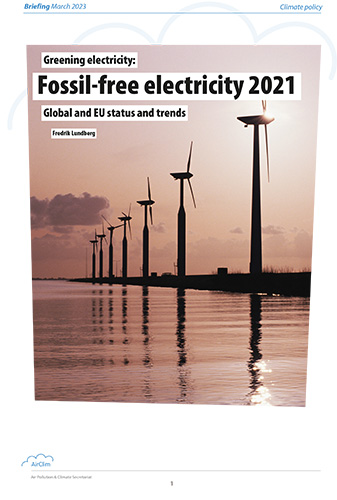
1.5° is tough, but doable
A new report underscores that while a climate target of 1.5°C is difficult and filled with uncertainties, it remains feasible and achievable with the right level of ambition.
A group of climate science experts and research institutions from the UK have published a study exploring a variety of potential paths for annual global emissions of greenhouse gases which would offer a reasonable chance of limiting a rise in the global average temperature to no more than 1.5°C above its pre-industrial level. Groups participating in the study included the Grantham Research Institute on Climate Change and the Environment at the London School of Economics and Political Science, and the Met Office Hadley Centre.
The report concludes that while keeping temperature rises below 1.5°C degrees in the short term would be very challenging, there are a number of emissions path that can limit warming to 1.5°C in the longer term.
In order to assess the theoretical possibility of staying under the 1.5°C target, the report considers two aggressive mitigation scenarios. The first of these posits that emissions drop from 47 billion tonnes of CO2 equivalent in 2010 to 40 billion tonnes in 2020, and then permanently drop to zero in 2021. The second sees emissions stay level this decade, remaining at 48 billion tonnes in 2020, and then again dropping to zero in 2021. In both scenarios, anthropogenic aerosols are modelled on a path directly related to that of CO2 emissions. Even under these aggressive scenarios, conceived of as 'first tests' rather than realistic emissions pathways, the study estimates that there would be less than a 50 per cent of avoiding global warming of more than 1.5°C.
A 90 per cent chance
However, in both these scenarios, there was a 90 per cent chance of temperatures dropping back to below 1.5°C within 50 years after the initial overshoot.
An alternative first test scenario was modelled on the basis that aerosols remained fixed at their 2020 level from that year onwards, staying put when CO2 emissions dropped to zero. In this scenario, the chance of remaining below 1.5°C with no overshoot increased from below 50 per cent to above 90 per cent, with a probable peak warming of just 1.2°C. As the study noted, however, a fixed aerosol scenario is unrealistic given the negative health and environmental effects of aerosols and current trends in air pollution legislation. It would likely only be possible with risky and as yet unproven geoengineering methods.
After establishing the theoretical potential of limiting warming to less than 1.5°C, the study moved on to explore emissions paths corresponding to more realistic rates of decline in annual emissions after 2020. Two sets of scenarios were explored, with differing assumptions on emissions baselines up to 2020, the shape of the paths from 2020, and the level of anthropogenic emissions of sulphate aerosols.
In all the 'realistic' scenarios tested, the chance of avoiding an overshoot of a 1.5°C target was well under 50 per cent.
A 50 per cent chance
However, the report also concluded that a number of realistic pathways existed that offered more than a 50 per cent chance of temperatures dropping back below 1.5°C after an overshoot period of up to 100 years.
Four characteristics of emissions paths capable of achieving this 1.5°C target in the long term are identified.
The first characteristic is that global emissions have to start falling no later than 2015, and can be no more than 48 billion tonnes of CO2 equivalent in 2020. Existing studies demonstrate that such cuts are both possible and economically attractive – if the right policy measures are put in place.
The second characteristic is rapid cuts from 2020 onwards, from between three and six percent annually depending on the level of emissions in 2020 and the chosen level of risk of missing the target. Limiting overshoot to 50 years or less will require reduction rates of at least five per cent a year. While noting that the upper feasible rate of emissions reductions was essentially a political policy question open for debate, the report argued that rates of up to six per cent a year may be possible but will certainly be challenging, and will entail a higher cost than less aggressive rates of reductions.
The third characteristic of the paths is that annual global emissions must be close to zero in 2100, and certainly well below 5 billion tonnes per year. The report argued that such a target might require the use of as-yet untested 'negative emissions' technology, such as biomass burning with carbon capture and storage.
The final characteristic of the emissions paths, as stated earlier, is that they accept a temporary overshoot of the 1.5°C target, returning to below 1.5°C within less than 100 years.
It is in this final characteristic, as the report noted, that the greatest uncertainties and risks lie. The risk is that a temporary overshoot of 1.5°C could cause irreversible damage or initiate feedback loops, such as release of greenhouse gasses from thawing permafrost, which could prevent temperatures from dropping back to below 1.5°C even in the long term.
As such, the report concludes that limiting temperature increases to 1.5°C on pre-industrial levels in the long term may be feasible, if a temporary overshoot is allowable. However, this remains filled with uncertainties. Given this, the report recommends that policymakers take actions today that are compatible with a later decision to switch to a 1.5°C goal. Specifically, limiting global emissions to between 40 and 48 billion tonnes of CO2 equivalent in 2020 may be compatible with both a 1.5°C and a 2°C goal. It would be advisable, however, to aim for the lower end of this 2020 window, in order to minimise the risk of losing the 1.5°C option for good.
| -3% | -4% | -5% | -6% | |
| 48 Bt | - | 45% | 55% | 65% |
| 44 Bt | - | 50% | 60% | 70% |
| 40 Bt | 40% | 60% | 65% | 75% |
Table: Chance of global average temperature returning to less than 1.5°C above preindustrial levels with less than 50 years of 'overshoot', for given annual rates of reductions from 2021, and given emissions in 2020 in billion tonnes of CO2 equivalent.
Reinhold Pape
Report: Mitigating climate change through reductions in greenhouse gas emissions: is it possible to limit global warming to no more than 1.5°C? Policy brief August 2010.

 Download this issue
Download this issue










